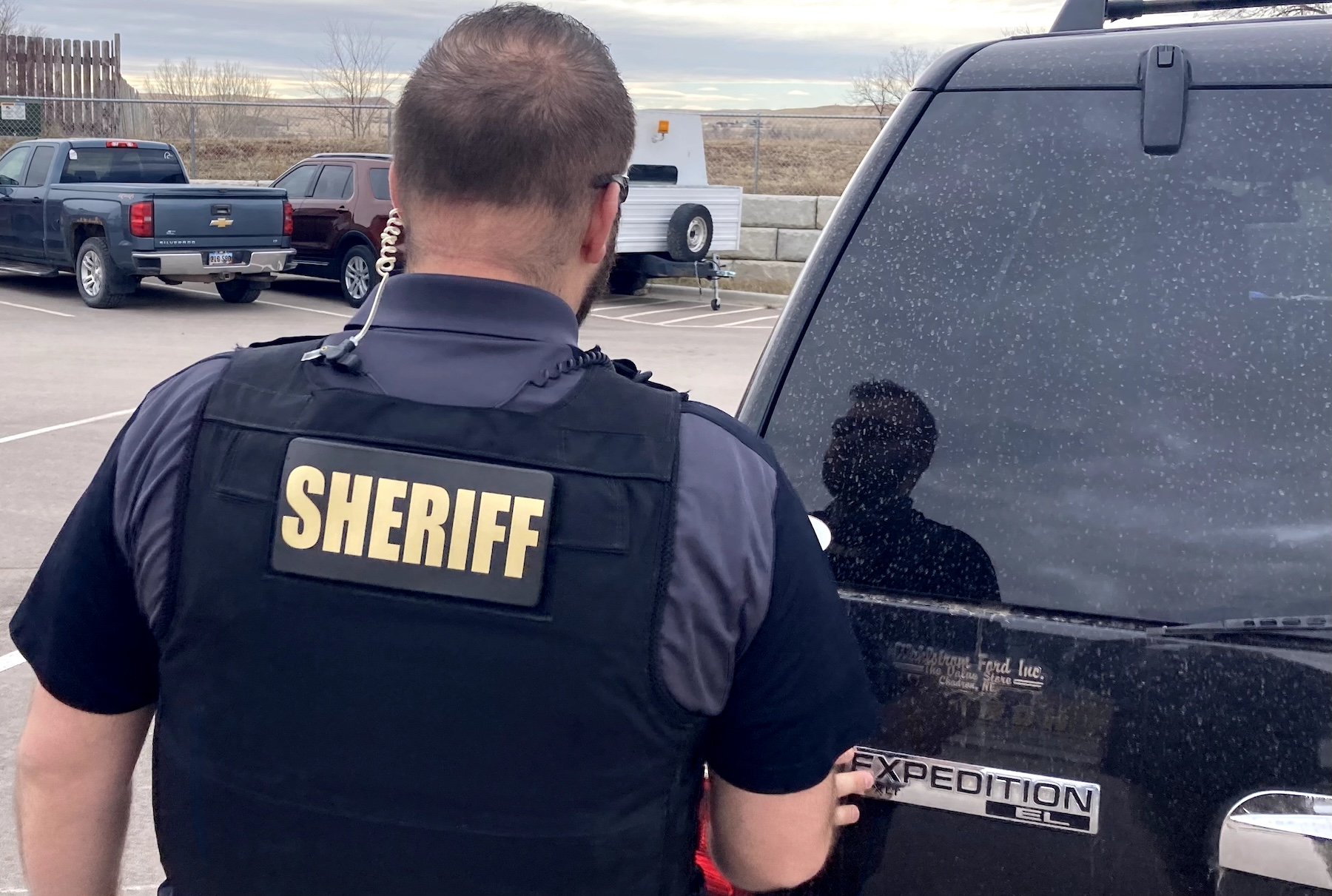
ACMJ11_Civilian-2_4-800
Citizens may have more training than the average cop — on a wide range of targets. These targets challenge the decision making process. When was the last time you were challenged on the police range?
Civilian who uses deadly force may suffer post-shooting trauma and civil litigation, and will most certainly be subjected to widespread, mostly unqualified second-guessing. The civilian usually has no standing legal immunity, and no agency, union or other support network in place. It behooves police not to needlessly add to those burdens. With that in mind, I offer some tips to primary investigating officers (PIOs) and investigators working a civilian involved defensive shooting (CIDS).

… or one like this. Intended victims come from all walks of life, and castle doctrines allow citizens to protect themselves regardless of their socio-economic status.
BE OBJECTIVE
Civilian concealed carry is no longer a passing phenomenon dependent on the policies of local law enforcement or which way the political winds blow. Nevertheless, in most large urban areas, the media, elected officials, prosecutors, sheriffs and police chiefs remain openly cynical of concealed carry, “stand your ground” laws, and castle doctrine statutes adopt-ed by their own state legislature. They brazenly frown on citizens “taking the law into their own hands” for defense of self or others, ignoring the very laws they are sworn to uphold. This disapproving attitude can easily infect the mindset of PIOs and investigators. It’s incumbent on them to perform the investigation of a CIDS and report about it accurately and objectively.
The agendas of police management, elected officials and the media should be ignored. Those in law enforcement are seldom qualified to give universal security or self defense recommendations to the public, or to second-guess the tactical or other considerations surrounding a CIDS.
Cops should appreciate the fact more than half of American households contain a firearm primarily for protection. Millions of citizens have a home state concealed carry permit, which in most instances, is honored by reciprocity in a dozen or more other states. Polls indicate more than three-fourths of Americans believe gun ownership is protected by the Second Amendment. And, it should be understood there’s actually no general legal obligation of the police to protect a given person in the population, nor is there normally any legal liability for the failure to do so. Policing is admittedly mostly reactive.

Clint Smith teaches many more average citizens than cops/military. Here he’s teaching an actual husband/wife team.
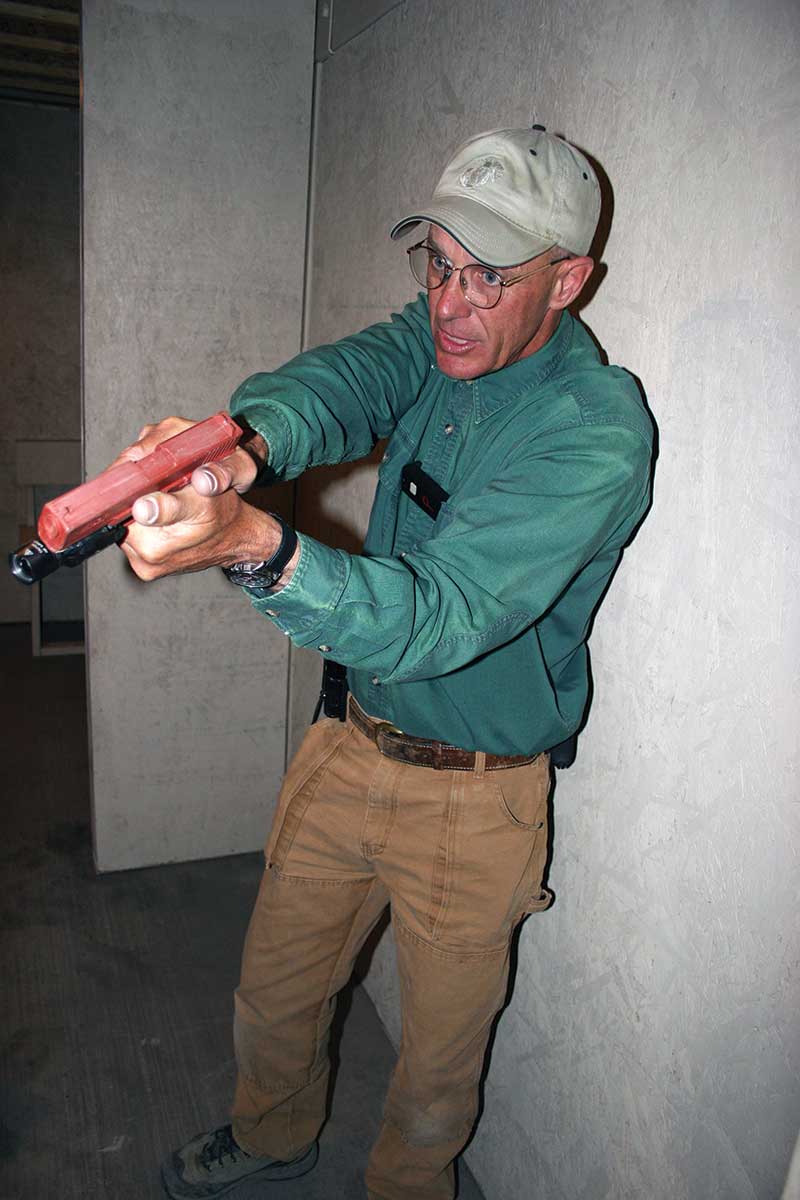
Here, Clint Smith demonstrates a room clearing drill for his students. Anyone motivated enough to spend their own money on this kind of training should be respected — not suspected.
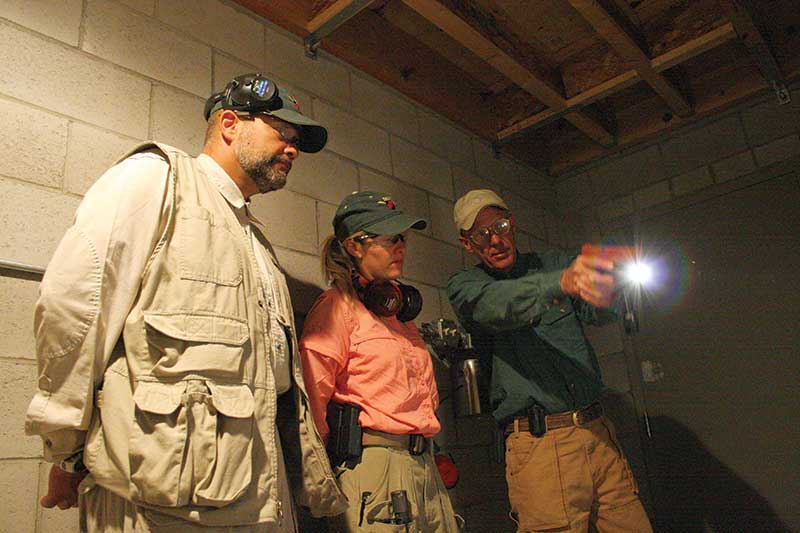
Any person who takes the time and money to train responsibly deserves to be treated with the same amount of objectivity and respect you would expect if you were involved in a defensive shooting.

Using a long gun doesn’t mean they were blood thirsty — they were just very careful in their choice of defensive weapon. In the Heller opinion, the Supreme Court noted knowledgeable fire-arms writers recommend the use of long guns as primary weapons for home defense.
Citizens who carry concealed should be described as gun “gurus” not “nuts,” as many are active in the competitive and defensive shooting disciplines and shoot hundreds or even thousands of rounds monthly. Firearm owners often know the law on use of deadly force and tactics on par with or better than those in local law enforcement. They may have attended training academies and classes and are worthy of respect in their own right, not held in disdain because a local politician, sheriff or police chief has unjustified reservations about private firearm ownership.
More than one fleeing felon has been apprehended, and the life of more than one patrol officer and plain-clothes investigator has been saved — by the intervention of an armed citizen.
You shouldn’t succumb to repeating the silly warning it’s safer to comply with criminal demands than to resist. Statistics simply do not bear this out.
The usual terminology found in police reports is not really appropriate for describing a CIDS. In the infrequent situation where state law has discrete terminology for a defensive use of force situation those terms should be used, as police and prosecutors generally under-stand them. In default, I suggest the following.
The person wounded or killed while attempting to do harm to an innocent (likely during the commission of a serious crime) should be referred to as the “malefactor” or “criminal actor.” You shouldn’t refer to the killing of a malefactor as “murder” in an act of apparent self-defense or defense of innocent others. It can be tentatively termed a “homicide,” but should thereafter be modified by adding “lawful” or “justified” when a final determination has been made.
The person who has used deadly force ostensibly in lawful defense of self or others is not a suspect, but rather, the “intended victim.” Someone who selflessly exposes themselves to a known risk coming to the aid of and using deadly force in defense of an intended victim or to stop a violent criminal act, should be referred to as a “Good Samari-tan.” Still better — simply refer to such people by name.
PIOs and investigators often cite as justification for a CIDS the intended victim was “in fear for his (or her) life.” Perhaps they believe state law condones use of force when such fear is present and prohibits defensive use of deadly force when it’s not. State law will rarely, if ever, require the intended victim possess the mental state of fear. State laws often condition the use of deadly force by the intended victim where he or she reason-ably believed such force was necessary to achieve a purpose allowed by law.
THE FIREARM AND AMMO
Civilian gun owners select a firearm (and its caliber) for a myriad of legitimate reasons including cost, availability or instructor recommendation. Maybe the gun was received as a gift or through inheritance, or was bought because of familiarity from former military or law enforcement service. You shouldn’t think it’s questionable a firearm used in CIDS may be possessed primarily for another purpose, such as hunting or competition. Manufacturer, caliber and type should identify the firearm used in the incident. Generic phrases such as revolver, semiautomatic pistol, rifle or shotgun are preferred over pejorative or erroneous characterizations such as military-style, assault or high-capacity automatic. The ammunition capacity and any modifications, customizing or high-tech features are largely irrelevant to whether or not the CIDS was lawful. Thus, references to such only serve to improperly prejudice the intended victim.
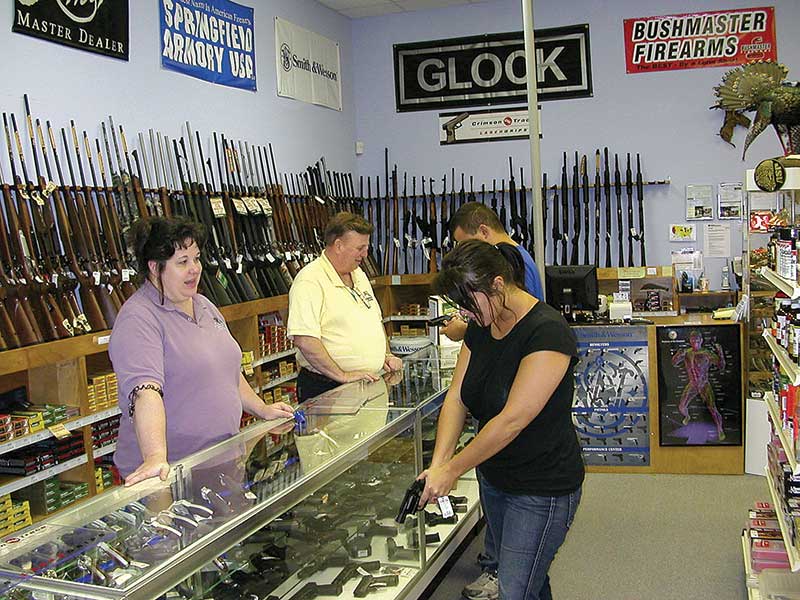
Any gun purchased could be the one at hand when a CIDS goes down. Don’t be quick to judge the tool used to defend someone’s life.
You should not engender or join the controversy whether an intended victim had “too much” gun. While an AR-15 or AK-47 rifle or a shotgun might not be your selection for home defense, they’re not controversial selections. The Supreme Court in the Heller opinion noted knowledgeable writers recommend the use of long guns as primary weapons for home defense.
All modern ammunition is potentially lethal. The type of ammunition should be described without pejoratives. Use only neutral terms such as jacketed, ball or hollow point. Glaser Safety Slugs, MagSafe and frangible rounds might be referred to as “specific use” ammunition; additional description is usually unnecessary and prejudicial.
Some civilians deliberately carry the same firearm, caliber and ammunition as the local police. Such ammunition should be referred to as duty ammunition, not law enforcement-only as the latter phrase implies it’s improper or illegal for a civilian to possess it. The designation is simply a marketing notation by a manufacturer. The legality of using law enforcement-only ammunition will rarely need to be addressed. Moreover, there’s no handgun in police duty use, which is universally illegal for civilians to own.
You may have only passing familiarity with the caliber of firearm used in a CIDS. A handgun chambered in 10mm or .357 SIG isn’t widely used, but those calibers shouldn’t be vilified. They’re good choices for civilian defense and have been used by respected law enforcement agencies, the former by the FBI and sheriff’s departments, and the latter is currently used by the Secret Service.
KNOW THE LAW
Specific state statutes generally ad-dress the use of defensive force. The body of law governing unreasonable police conduct and excessive use of force (Fourth and Fourteenth Amendments; 42 USC 1983) is not applicable to a CIDS. Whether the force used by an intended victim was actually reasonable or necessary should rarely be pertinent in testing the legality of its use.
There likely is no state law flatly prohibiting use of deadly force on an un-armed person, nor any legal requirement a non-police citizen to issue a command or warning prior to using deadly force. A threat to use such force is usually tactically unsound, and in some states may constitute an assault type crime.
A department’s use of force spectrum is not applicable to a CIDS. Firing a warning shot may be unheard of in law enforcement and highly questionable. When safely made by a civilian under perceived threat of imminent death or grave bodily harm, or to stop the imminent commission of a crime of force, it may not constitute civil misconduct or even a crime. It might be the right thing to do.
Most state laws contain similar basic use of force concepts, including the following: Deadly force may be used when a person reasonably believes it is necessary to do so to defend against a lethal attack to himself or innocent other(s), or to stop the commission of certain serious crimes against an innocent person (for ex-ample, robbery, rape, kidnapping). State law may also sanction use of deadly force to defend against certain property crimes (for example, burglary, home invasion, arson). As stated earlier, being in fear for one’s life will rarely, if ever, be an explicit part of a state’s defensive use of force law.
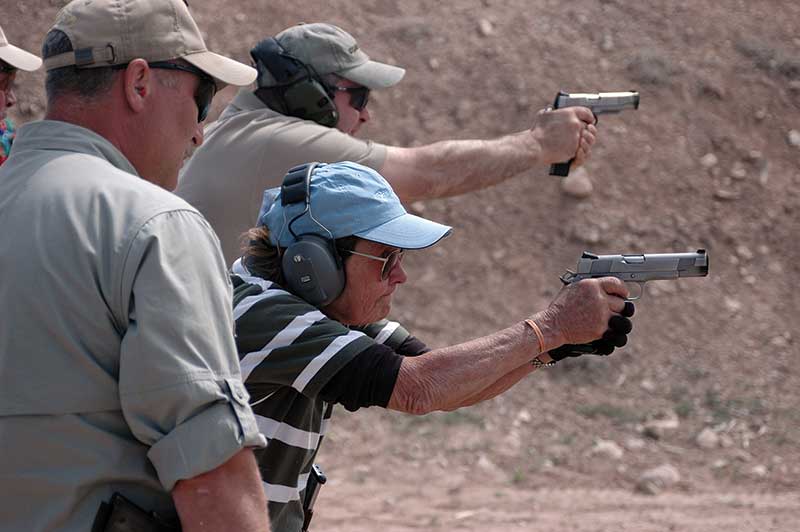
You’re never too old to take personal safety into your own hands. Many citizens aren’t opposed to spending money on high-quality training schools. Maybe some burglar will come face-to-face with “Grambo” and you’ll be the PIO.
In some states, the expanded castle doctrine and “stand your ground” laws presume requisite lethal intent of the malefactor and the reasonable belief of the intended victim that deadly force was necessary. These presumptions may be irrefutable. The effect is deadly force may be resorted to first — not last. In such cases, the investigation and public comments must be considered through filters, focusing more on the actions of the malefactor than on those of the in-tended victim. Police personnel should not shy from emphasizing the facts, which identify the criminality of the malefactor’s actions.
Many state laws disallow the use of force for defense when the intended victim was the initial aggressor. Those statutes usually contain a provision whereby an initial aggressor who has broken off contact is once again treated as an innocent. A subsidiary knowledge point here is the ability to differentiate everyday verbal arguments from “fighting words.”
The laws of many states criminalize the flashing, reckless or menacing display (brandishing) of a firearm. You should realize this type of statute may not apply when the proscribed conduct occurs during the course of lawful defense of self or others.
ARREST THE RIGHT PERSON
Extraordinary perseverance and prudence are in order when working a CIDS where the intended victim and malefactor were strangers and there’s clear evidence a violent felony was in progress. Some state laws raise the threshold for or restrict an officer’s right to arrest the intended victim in a CIDS. Prosecutors and officers should heed the dictates of any specific state statute(s) before authorizing or affecting an arrest in such situations. Failure to appreciate such limitations may result in substantial liability for civil damages to the improperly arrested intended victim.
If you make an arrest, you should understand most citizens only know what they’ve seen on TV or what an attorney has told them to expect and how to react in the face of police questioning. Thus, if a Miranda warning or something similar is administered, don’t be surprised to get a re-quest for counsel in response. Worse yet, you might trigger the intended victim’s foolish and unseemly invocation of the Fifth Amendment right to remain silent.
“Firing a warning shot may be unheard of in
law enforcement and highly questionable.”
You should actually appreciate the intended victim who evidences he or she has received training for a CIDS. They will assert they are the complain-ant/victim, were compelled by the acts of a criminal actor to use deadly force as permitted by law and request the arrest of the person whose lethal attack or criminal conduct they thwarted.
THE GOLDEN RULE
Bear in mind no matter how well trained and equipped, an innocent citizen involved in a CIDS likely did not have backup to call, restraints, body armor, less lethal weapons, force-on-force training or experience in detaining suspects at gunpoint. The CIDS is a dreaded once-in-a-lifetime event for the intended victim, not something which is part of their chosen employment or daily routine.
The Golden Rule of investigating a CIDS and explaining it to the public should be to treat the citizen involved as you’d want to be treated if you were involved in an on-duty shooting. The protocols the union or benevolent association have adopted for officer shootings are usually a satisfactory model to emulate and adapt to a CIDS.
Many who carry concealed hand-guns do so under HR 218 as active or retired LEOs. Thus, it’s not unlikely the intended victim in a CIDS is an out of jurisdiction or off duty state, local or federal officer who has used deadly force as a common citizen. That alone is reason enough to always apply the Golden Rule.















